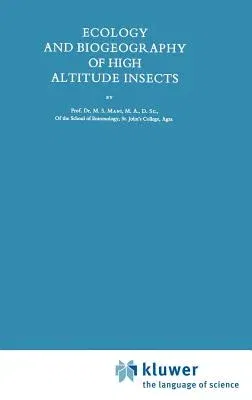In my book Introduction to High Altitude Entomology, published in 1962,
I summa- rized the results of eight years' studies, mainly on the
Himalaya. I have since then had the opportunity of studying the
collections of high altitude insects from the Alps, Carpathians,
Caucasus, Urals, Alai-Pamirs, Tien Shan, Altai and other im- portant
mountains of the world in different museums and institutions in Europe.
Through the courtesy and generosity of the Academy of Sciences of the
Union of Soviet Socialist Republics, I was also able to personally
collect insects and make valuable field observations on the Caucasus,
the Alai-Pamirs, Ala-Tau and the Tien Shan mountains. Through
comparative studies I have tried to synthesize the fundamental
principles of high altitude entomology. I have described here the
distinctive characters of the high altitude environment, the ecological
specializations of the high altitude insects, their ecological inter-
relations and the outstanding peculiarities of their biogeography. I
have also pre- sented here an outline of the high altitude entomology of
the principal mountains of the world, with brief accounts of their
orogeny, geology and vegetation. This book differs from all other
contributions in the field in its comparative ecological approach and in
the fact that the main emphasis is throughout on the evolution of the
high altitude ecosystem as an integral part of the orogeny. High
mountains are, in all parts of the world, important and independent
centres of origin and differ- entiation of distinctive and highly
specialized ecosystems and faunas.

